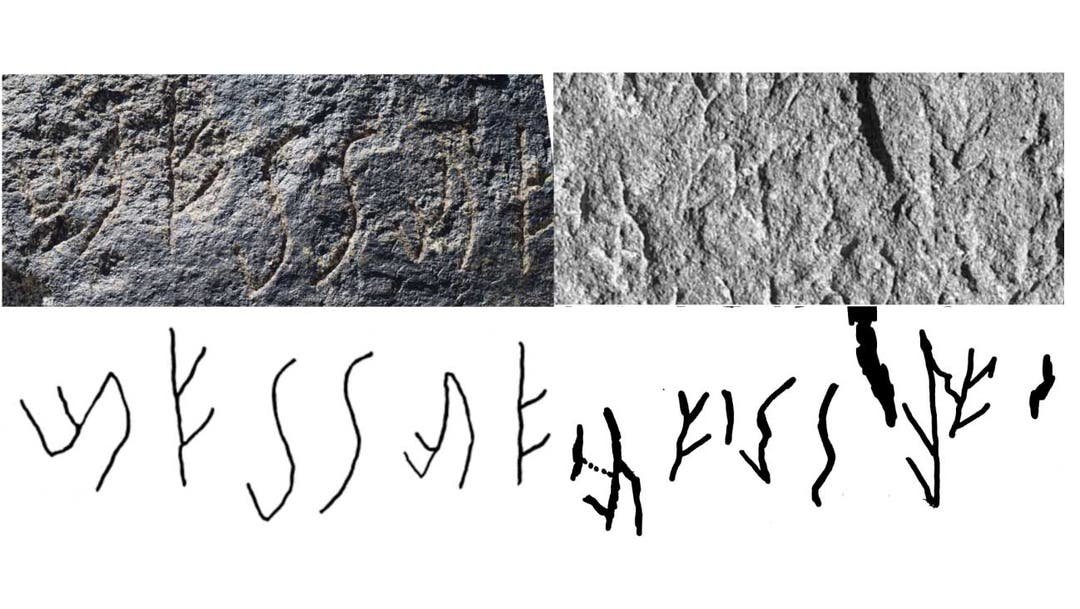Using the same method that helped interpret the Rosetta Stone, archaeologists have partially decrypted the 'unknown' writing system of the Kushan Empire.
KUSHAN INSCRIPTION DISCOVERED ON A ROCK FACE IN TAJIKISTAN. CREDIT: BOBOMULLO BOBOMULLOEV
Between the first and third centuries, the ancient Kushan Empire, which spanned from what is now Uzbekistan into northern India, contributed to the introduction of Buddhism to East Asia. Archaeologists first noticed items in the area of the empire carrying a "unknown Kushan script" that they couldn't decipher in the 1950s. But in July 2023, scholars from Germany and Tajikistan declared that they had successfully partially decoded the ancient writing system.
The researchers did this by contrasting a trilingual text discovered in Afghanistan by French archaeologists in the 1960s with a bilingual text discovered in Tajikistan by Tajik archaeologists in 2022.
A "bilingual text" or a "trilingual text" is a parallel piece of writing that conveys about the same meaning in two or three languages. These multi-script writings served as the equivalent of the Rosetta Stone for scholars, enabling them to recognize words and symbols in the Kushan writing system from antiquity.
The discovery of the Kushan "Rosetta Stone(s)"
When characters from the unidentified Kushan script were discovered inked on a stairway at Surkh Kotal in Afghanistan in the 1950s, archaeologists were able to identify it for the first time. The script was discovered once more on a boulder at Dat-i Nwur, also in Afghanistan, in the 1960s by French archaeologists. Along with two additional scripts that represented the Bactrian language and the Gndhr language, the text on the boulder also included the Kushan script.
The trilingual text did not, however, instantly result in a breakthrough in the comprehension of the obscure Kushan script. According to Svenja Bonmann, a linguist at the University of Cologne in Germany and the lead author of the recent article about the unidentified Kushan script published in Transactions of the Philological Society in July 2023, this was at least partially because French archaeologists took shoddy photos of the trilingual text and used an inaccurate drawing of it to discuss the discovery.
Researchers were unable to translate the untranslated Kushan script in the absence of clear, exact photographs of the trilingual text. Archaeologists discovered numerous additional examples of the script over the following several decades, including an inscribed silver bowl in Kazakhstan, but they were unable to decipher its meaning. Then, in 2022, Tajik archaeologists discovered a bilingual document in Tajikistan's Almosi Gorge that had both the Bactrian language and an unidentified Kushan script.
According to Jakob Halfmann, a linguistics scholar at the University of Cologne and a co-author of the latest report, "[the archaeologists] were following information provided by a local man." He had noticed writings on the sides of nearby mountains, and he had tried to inform archaeologists about them for a while, but they just listened to him and believed him last year. They immediately launched an expedition, during which they discovered that there were in fact inscriptions.
The Tajik archaeologist Bobomullo Bobomulloev discovered the bilingual script, and together with Bonmann, Halfmann, and Natalie Korobzow, another linguist at the University of Cologne, they tried to interpret the text (Bobomulloev and Korobzow are also co-authors on the new article).
THE TITLE ‘KING OF KINGS’, ON THE LEFT ON A KUSHAN INSCRIPTION FOUND IN TAJIKISTAN, ON THE RIGHT ON THE INSCRIPTION FOUND IN AFGHANISTAN.
One of their most important discoveries was that they were able to identify the ruler Vema Takhtu's name in both the bilingual and trilingual manuscripts because it occurred in the Bactrian portions of both texts.
This approach is comparable to the method French philologist Jean-François Champollion used to translate the Rosetta Stone, which is famous for containing a section written in Greek, Egyptian Demotic script, and Egyptian hieroglyphs. Champollion began by recognizing royal names like Cleopatra in the Greek script and then locating them in the areas of the stone that were written in ancient Egypt.
Bringing the Kushan Empire to light
The majority of documented Kushan script artifacts were discovered in the contemporary nations of Afghanistan, Uzbekistan, Kazakhstan, and Tajikistan between the second and third centuries B.C. Along with languages like Bactrian, Gandhr, and Sanskrit, the script corresponded to an unidentified Iranian language that was probably one of the Kushan Empire's official tongues.
Research by Bonmann and her coworker is important because it adds to the body of knowledge about Vema Takhtu, who ruled the Kushan Empire in the first century and extended its dominion into northwest India. Before, some academics argued over whether he actually existed. The discovery of his name in two distinct specimens of Kushan writing strengthens the historical proof that he was a significant Kushan Empire monarch.
The authors of the new piece not only named Vema Takhtu but also named the expressions "king of kings" and "great savior"—both of which describe Vema Takhtu. The writers think they have roughly half of the Kushan characters figured out, and they intend to figure out more in the future. The empire and the people who lived there about two millennia ago may be better understood with further study.








